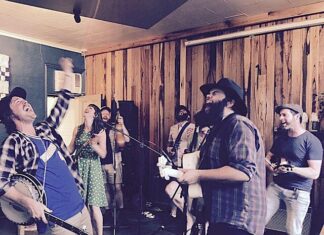Bellarine Peninsula Basketball Association has called for more facilities following the allocation of funding for an Armstrong Creek stadium in the federal budget.
Treasurer Jim Chalmers released his third federal budget on Tuesday, May 14. While there weren’t many Greater Geelong-specific announcements, $6 million in federal funding was allocated to the proposed Geelong sports stadium.
Bellarine Peninsula Basketball Association’s Mark Brunger said he would have liked to see more in the budget for regional sporting venues across the Bellarine as there was a “critical need for more court space”.
“Whilst we applaud any additional court space being added to the region, the Bellarine Peninsula needs new court space as soon as possible,” he said
“We have had plans and a business case in place for a number of years now for a new three-court facility in Drysdale. However, funding is naturally the hurdle to this happening.
“(This would help) continue to grow the game and provide a sporting outlet for young people across the area, with basketball numbers rising on the peninsula as the population increases.
“Over the last two domestic seasons, our female numbers alone have doubled from around 500 to 1000.
“This highlights the level of growth we are experiencing in the game across the Bellarine Peninsula…as many young families are coming to the area.”
City of Greater Geelong mayor Trent Sullivan said he was pleased that the federal government re-confirmed its previous funding commitment to the proposed Armstrong Creek Stadium.
“We know there is a desperate need for more indoor courts for sports such as basketball and netball, and this facility will help meet the demand,” he said.
“However, this is a local-level venue and is not the Regional Indoor Sports and Events Centre we have been advocating for as part of the state government’s Commonwealth Games legacy facilities.
“Financial Assistance Grants are another key source of support from the federal government to local governments.
“The total value of these grants will increase to 0.51 per cent of the total Commonwealth Tax Revenue in 2024-25. This is up from 0.49 per cent in 2023-24.
“The increase is very welcome, but to assist with the long-term financial sustainability of local governments around Australia, we would like to see the proportion lifted to closer to one per cent.”
The federal government will increase funding from $617 million this financial year to $1 billion in 2027-28 for its Roads to Recovery program, allowing local councils to address problem areas on their roads.
The Black Spot Program will also increase from $130 million to $150 million during the same period to fund works in places where serious crashes are likely to or have occurred.
“Local governments are responsible for maintaining around 87 per cent of Victoria’s roads so the federal assistance to councils is crucial,” Mayor Sullivan said.
“These are both important funding sources helping us deliver upgrades to local roads to increase safety and cater for our growing population.”
Small business owners in Geelong will also be able to apply for a $325 energy bill rebate from July 1, with households across the country receiving a $300 energy rebate, thanks to the budget.
Businesses with an annual turnover of $10 million can continue to deduct assets worth less than $20,000 following the 12-month extension of the federal government’s instant asset write-off.
Geelong Chamber of Commerce chief executive Jeremy Crawford said that while the support for small businesses was appreciated, it was a “very small initiative” that “won’t have much traction”.
“That $325 is a one off and It doesn’t actually provide businesses with any tangible opportunity to invest and grow,” he said.
“We’re not highly critical of this particular budget, but I think we’re still lacking some creativity and opportunity amongst our economy and small business segment.
“What businesses are really looking for at this point in time is an improvement in the economy and business conditions locally, as well as avenues for investment.
“We’ll be looking at some other avenues over the coming months and years to hopefully try and unlock some of that further investment.”
The federal budget also included an increase in stage three tax cuts, which could save people more than $1500 a year and $90 million to pay for more TAFE courses.







